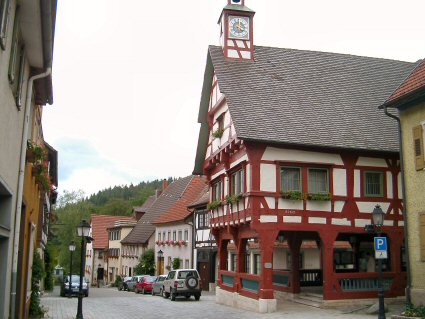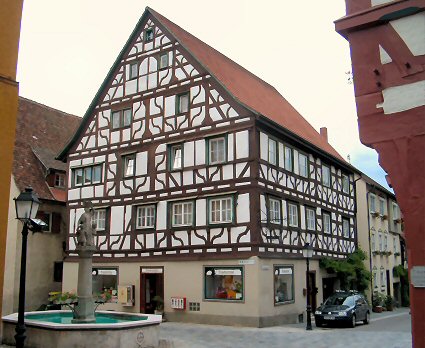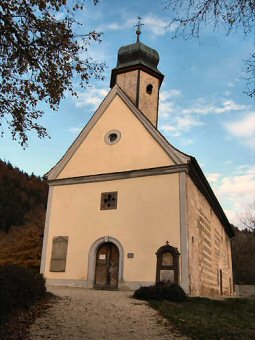The romantic little town is not directly on the Danube cycle path, but the small detour with a climb up the town hill is worth it! Tip: Turn right in Stetten, cross the Danube and ride up the road.
In long years of work, most of the half-timbered buildings in the upper town have been lovingly restored and the historic townscape has been restored, with the town hall, probably dating from the 13th century, at its centre. More about the interesting history of Mühlheim.

Mühlheim was surrounded by a city wall, the remains of which are still visible in some places. At each of the two corners, as well as on the right in front of the gate, a tower used to stand. Through the gate you enter the main street with numerous old half-timbered houses and the town hall.

The town hall is a Gothic half-timbered building with an open arcade and is one of the oldest buildings in the city. A column with a Romanesque capital indicates that it was founded around 1200.

Fountain and beautiful half-timbered house opposite the town hall

Half-timbered houses along the main street

The castle was originally built as a fortress around 1200, at the time of the founding of the town, on the so-called Nussbühl. T he reconstruction of the complex in the years 1751-1753 changed the castle considerably and gave it its present appearance. Schloss Mühlheim is still the residence of the von Enzberg family and therefore cannot be visited.
Back on the Danube cycle path, after about one kilometre we reach the cemetery with the Gallus church from the 10th or 11th century. It is built in Romanesque style and contains frescos from the 14th and 15th century.



Danube cycle route
History of Mühlheim
As is not difficult to guess from the name, there was once a mill here (Mühle = mill). A church was probably built near this mill as early as the 8th century. It was supposedly under the protection of St. Mauritius. At a later time, probably not until the 9th century, when the convent St. Gallen gained possession and influence in the Mühlheim area, St. Mauritius was given St. Gallus as a copatron. In the 10th/11th century, the old church was demolished and replaced by a new building, the ground plan of which is essentially still preserved today.
Shortly after 1200, Frederick IV of the von Zollern family founded a castle on the spur of the mountain, to which a fortified town with four gates was attached. Several noble families, including a branch of the von Werenwag lords, chose it as their residence, and the Salem monastery established a care yard (farm). The old trade route, now an imperial road, favoured the development of weekly and annual markets, and Mühlheim developed into a regional economic centre.
Gradually, the Counts of Zollern succeeded in making their town Mühlheim the administrative centre of the eponymous dominion by acquiring several villages and, above all, by obtaining the bailiwick over the Beuron Monastery.
The lordship of Mühlheim changed hands several times and lost importance because a new road led from Lake Constance via Tuttlingen to Rottweil.
The Thirty Years' War sealed the decline of the commune.
The town was repeatedly occupied by imperial and Swedish troops and the citizens suffered terribly from the
consequences of this war. In 1632 300 Swedes are said to have been killed in an attack.
The Swedish grave on the Danube still reminds us of this bloodbath. From originally 96
citizens with their families at the beginning of the war, only 28 lived in the city in 1635.
The rest had fled, starved to death or succumbed to an epidemic.
The town recovered only little from this blow of fate, and in the 18th century it sank almost to insignificance.
The decline of Mühlheim was bad for the town and its citizens, good for us because Mühlheim was able to preserve its medieval character - there was no money for new buildings.
In 1805 Mühlheim came to the Kingdom of Württemberg and in 1890 it was connected to the Württemberg railway network with the construction of the Danube railway. In the years that followed, craft and industrial businesses settled in the suburb.
Today, numerous companies from the field of medical technology are based in Mühlheim. The ball bearing factory SKF also has a branch there.